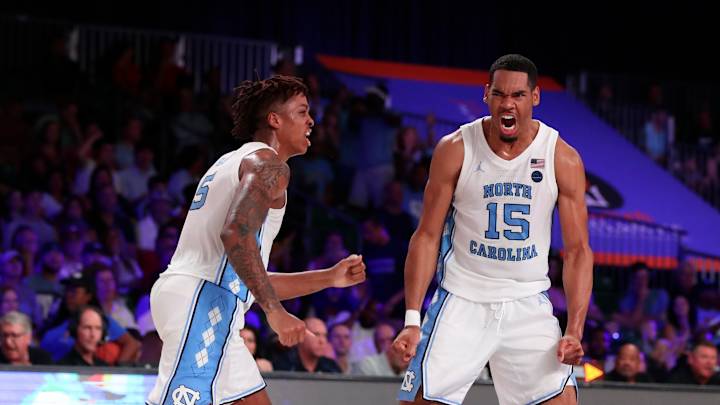UNC Basketball Exam Week: Grading the Post

One of the slowest weeks of the college athletics calendar has arrived as players buckle down to finish the fall semester off with final exams and coaches on the road recruiting.
With that in mind, it’s time to take an in-depth look at every North Carolina perimeter player and give them a grade for their performance to this point in the season.
Only nine games into the season, consider these grades a quarterly report that are subject to — and almost certain to — change dramatically.
Armando Bacot — A
To this point in the season, Bacot has probably been Carolina’s most productive and efficient offensive player, averaging 10.6 points, 8.1 rebounds and 1.8 blocks, despite missing nearly two entire games to injury.
Bacot is shooting 58.5 percent from the field and learned a valuable lesson in the loss to Michigan when veteran big man Jon Teske kept the freshman on his heels. Since then, Bacot has been more assertive in the paint.
Per KenPom.com’s advanced stats, Bacot is Carolina’s best rebounder by a wide margin, grabbing 14.6 percent of available offensive rebounds (36 nationally) and 24.4 percent of defensive rebounds (88 nationally) while his block rate of 9.9 percent is good enough for 35 nationally.
He’s had some bad luck with injuries, but as his role grows, expect the Tar Heels to become more successfully.
Garrison Brooks — B
Still the best defender on the roster, Brooks has expanded his offensive game this season, showing more mobility and the ability to step outside and knock down mid-range jumpers.
His offensive rebounding rate has fallen from last year, but that’s to be expected when playing alongside someone like Bacot.
Otherwise, Brooks is performing well in the role he’s expected to play as a leader and interior defender.
His overall offense is still a work in progress, but it’s clear he’s become a more dynamic player whose impact on Carolina’s performance is bigger than any stat sheet can reflect.
Brandon Huffman — C
Huffman has played only 34 minutes, largely due to injuries to Bacot, but he’s done about what’s expected of him in those minutes.
He’s on the floor to provide some toughness in the paint, grab rebounds and defend the basket.
His offensive rebounding rate of 8.8 percent is pretty solid. The only knock on his game this season has been stepping outside of his role with a few silly shots, which is the opposite of what he did in Wilmington, when he played within himself and had four points and four rebounds in eight minutes.
Justin Pierce — C
Pierce’s transition has been among the more challenging among the Carolina newcomers because he’s being asked to cross the line from wing to post in playing the three and four.
He’s had a hard time finding his shot, hitting 25 percent from 3-point range and 41 percent on 2-point attempts.
Averaging 6.2 points and 5.2 rebounds, Pierce has held his own on the boards, grabbing 11.9 percent on the offensive boards to rank 132rd nationally, while he’s generally made good decisions, averaging fewer than one turnover per game.
Pierce is at his best when he attacks the boards and locks in defensively, with points to follow. That hasn’t happened in every game this season, and at this point, Pierce’s biggest challenge appears to be his confidence.
Overall — B
The post generally hasn't been an issue for Carolina this season, though depth has been.
Bacot and Brooks have been among the most consistent players on the roster, but behind them, it's been a struggle to maintain the same quality.
As the Tar Heels head toward conference play, expect the offense to start running through the post more, and if Sunday is any indication, the big men did a better job running the floor to help set up the break.
The law of averages says that Pierce's shooting has to improve at least a little, while Carolina could certainly use more rebounding from everyone not named Bacot.
